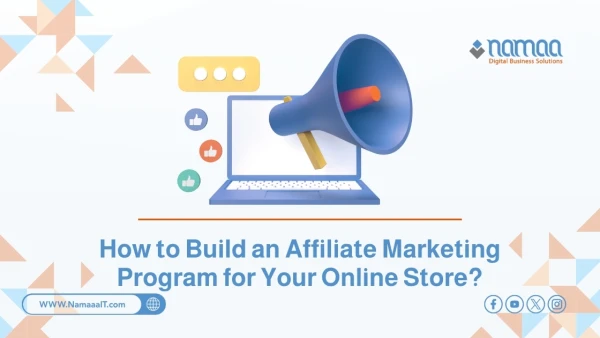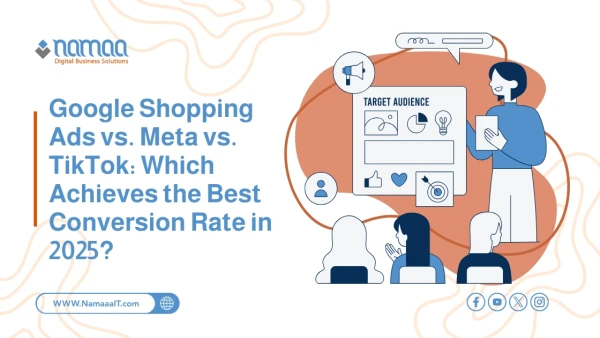Social commerce in the Gulf is undergoing a profound transformation in the digital shopping landscape, turning social media platforms into major channels for e-commerce. These platforms are no longer just tools for communication and entertainment; they've evolved into fully integrated shopping and marketing ecosystems. With high internet penetration and widespread smartphone usage, Gulf-based consumers now shop seamlessly through social media—a golden opportunity for brands to reach a highly engaged audience with strong purchasing power.
As startups and regional platforms join the race, a core question arises: who is at the forefront of social commerce in the Gulf? In this article, we explore the major players, analyze the factors shaping this booming market, and spotlight trends that define its future.
What Is Social Commerce, and Why It Matters
Social commerce in the Gulf blends social media and e-commerce, enabling users to discover and purchase products directly within platforms like Instagram, Facebook, and TikTok—without ever leaving the app. This convergence offers an interactive, seamless shopping experience while building brand loyalty. Here’s why it’s so important:
- Streamlined Shopping Journeys: Users can discover, review, interact, and buy products with minimal friction.
- Built-In Trust: User reviews and shared experiences on social platforms boost credibility and guide purchase decisions.
- Broader Reach: Social media’s vast scale enables brands to reach diverse demographics effortlessly.
- Real-Time Engagement: Direct interaction channels improve response times and enhance the overall customer experience.
In today’s fast-paced digital era, social commerce serves as a powerful tool for brands aiming to strengthen their online presence and drive sales.
The Growth of Social Commerce in the Gulf
The Gulf region has witnessed meteoric growth in social commerce, fueled by several enabling factors:
- Smartphone & Internet Penetration: With over 90% internet usage and almost universal smartphone adoption in the Gulf, social media-based shopping has become highly accessible.
- Advancements in Digital Payments: Mobile wallets like Apple Pay, Samsung Pay, and STC Pay offer secure payment methods, enhancing consumer confidence.
- High Purchasing Power: Countries like Saudi Arabia and the UAE rank among the top in the region in terms of disposable income.
- Government Initiatives: E-commerce frameworks like Saudi Arabia’s “Ma’roof” platform enhance trust and regulatory support.
- Shifting Consumer Behavior: Gulf consumers increasingly value convenience and personalized, interactive shopping journeys.
- Influencer-Driven Reach: Digital influencers amplify reach and conversion through content that resonates with local values.
Collectively, these factors position social commerce as one of the fastest-growing segments in the Gulf’s digital economy.
The Role of Influencers in Gulf Social Commerce
Influencers play an instrumental role in Gulf social commerce. Brands collaborate with influencers on platforms like Instagram, TikTok, and Snapchat to reach targeted audiences and drive purchase decisions directly. Their impact stems from:
- Trust & Authenticity: Followers often act on influencers’ recommendations.
- Precise Targeting: Each influencer accesses a unique demographic, enabling brands to tailor reach.
- Engagement & Sales Boost: Influencer-led campaigns often yield high engagement and sales.
- Cultural Relevance: Local influencers align promotions with cultural norms and preferences.
Building long-term influencer partnerships—sometimes including exclusive product lines—can significantly elevate a brand’s social commerce performance.
Social Commerce vs. Traditional E-Commerce
| Aspect | Social Commerce | Traditional E-Commerce |
|---|---|---|
| Purchase Location | Within social media apps | On standalone e-commerce websites |
| User Experience | Interactive, recommendation-driven | Individualistic, less interactive |
| Ease of Purchase | Fewer steps, instant buys within app | Multi-page process needed |
| Role of Influencers | Central to promotion and sales | Usually secondary, via standard ads |
| Audience Targeting | Highly targeted within platform ecosystems | Via broader marketing channels |
| Building Trust | User reviews and social validation | Relies on site reviews and trust badges |
| Geographical Reach | Widespread, age and culture targeted | Global, but trust must be established |
These contrasts give social commerce an edge in delivering instant, interactive, and trust-based shopping—especially in dynamic Gulf markets.
Who’s Leading Social Commerce in the Gulf?
Social platforms like TikTok, Instagram, and Snapchat are at the forefront of social commerce in the Gulf. A 2024 study showed Snapchat ranked as the top social shopping app in Saudi Arabia and UAE, thanks to its interactive interfaces and immersive features.
Meanwhile, regional mega-platforms like Noon and Amazon are integrating AI tools and influencer outreach to supercharge engagement and drive conversions. Emerging regional players—such as New Wave and Abra Madak—have also gained traction by running successful cross-platform social campaigns.
Statistics further emphasize the shift: 78% of consumers in the MENA region discover new brands via social media, outperforming global averages and solidifying the platforms’ relevance.
FAQs About Gulf Social Commerce
What legal challenges face social commerce in the Gulf?
Lack of unified regulations for social sales
IP protection concerns
Need for clearer influencer partnership standards
Regulatory inconsistencies across GCC countries
How does social commerce influence consumer eco-awareness?
Enables sharing of sustainability credentials
Promotes recycling and waste-reduction campaigns
Encourages brands to adopt transparent environmental practices
What’s AI’s role in Gulf social commerce?
Data-driven content and ad targeting
Chatbot-led customer support
Market trend and consumer behavior prediction
Product recommendation systems
How does social commerce support Gulf youth entrepreneurship?
Low-cost brand building on social platforms
Access to digital marketing tools without high budgets
Fostering innovation and personal brand development
Enabling micro-business models driven by social engagement
What future trends shape Gulf social commerce?
AR/VR-enhanced product experiences
Short-form video and livestream shopping
Expansion into verticals like education and health
Tight integration with payment wallets
Enhanced data analytics for campaign optimization
Summary
✅ Gulf e-commerce exceeded $50 billion in 2024, projected to hit $70 billion by 2025.
✅ More than 90% of Gulf residents use smartphones and internet daily.
✅ 78% of MENA consumers discover new brands on social media—higher than global levels.
✅ Leading platforms: Instagram, TikTok, Snapchat dominate Gulf social commerce.
✅ Influencers have become essential in driving engagement and conversions.

.webp)


.webp)



